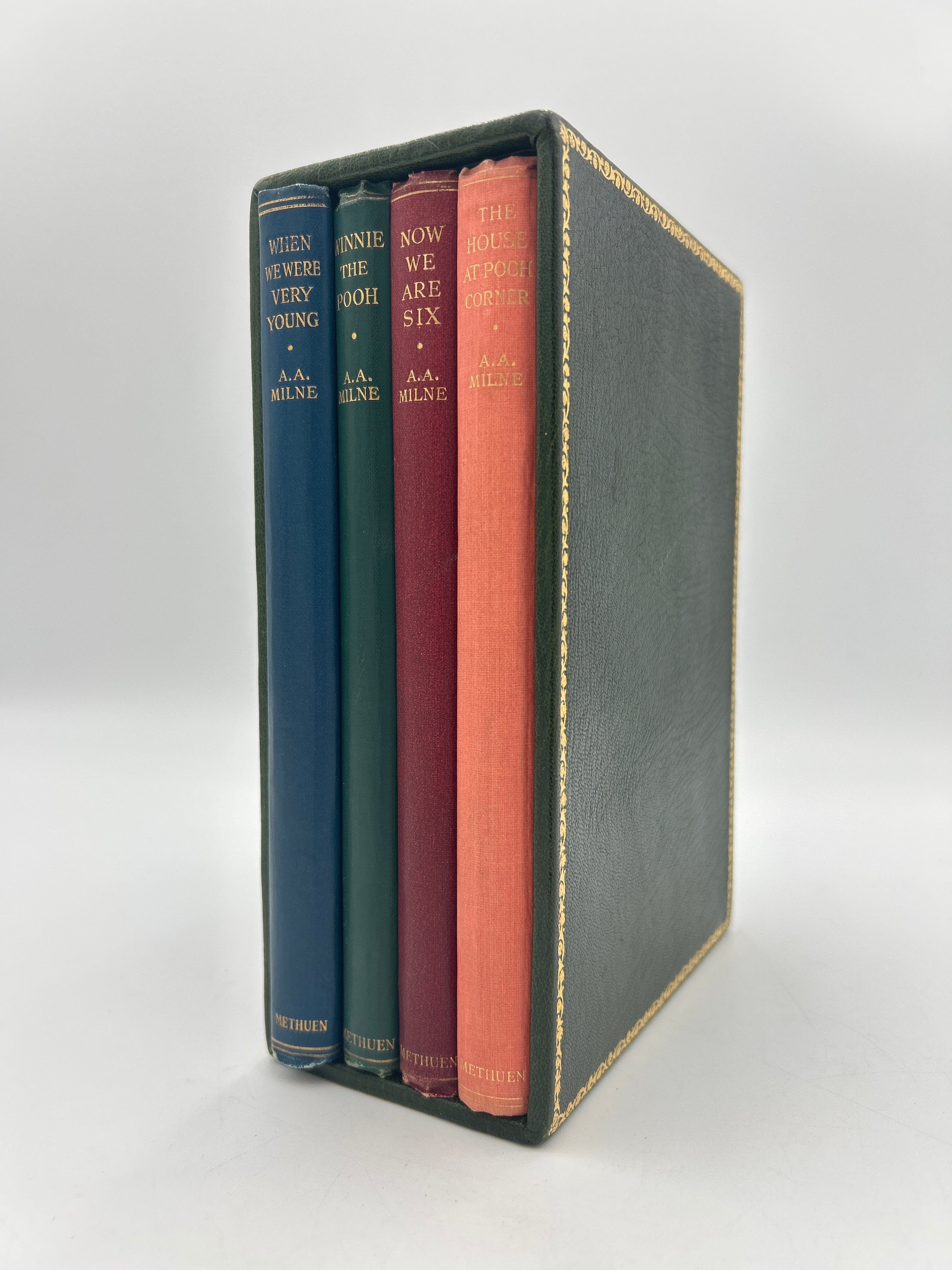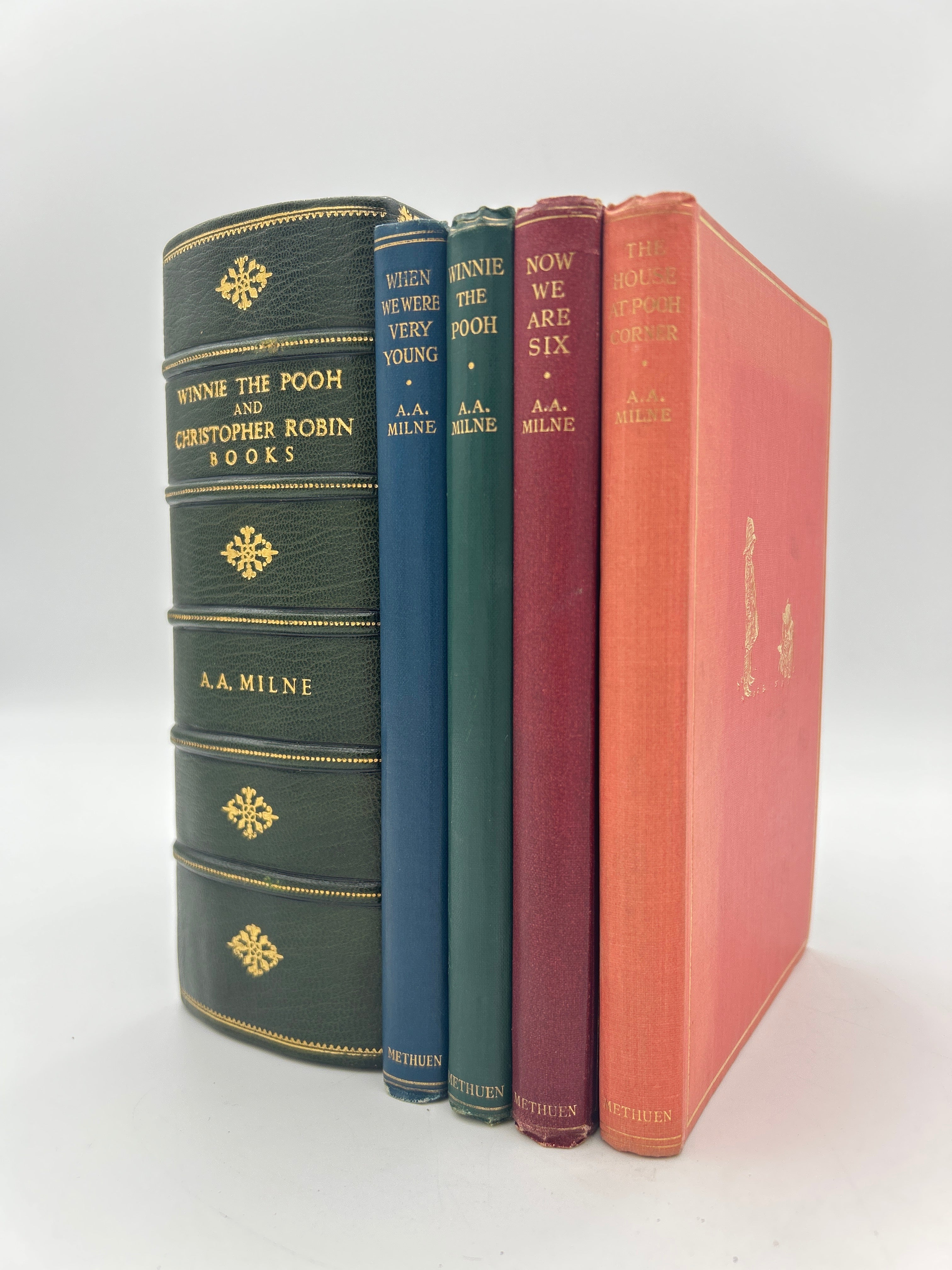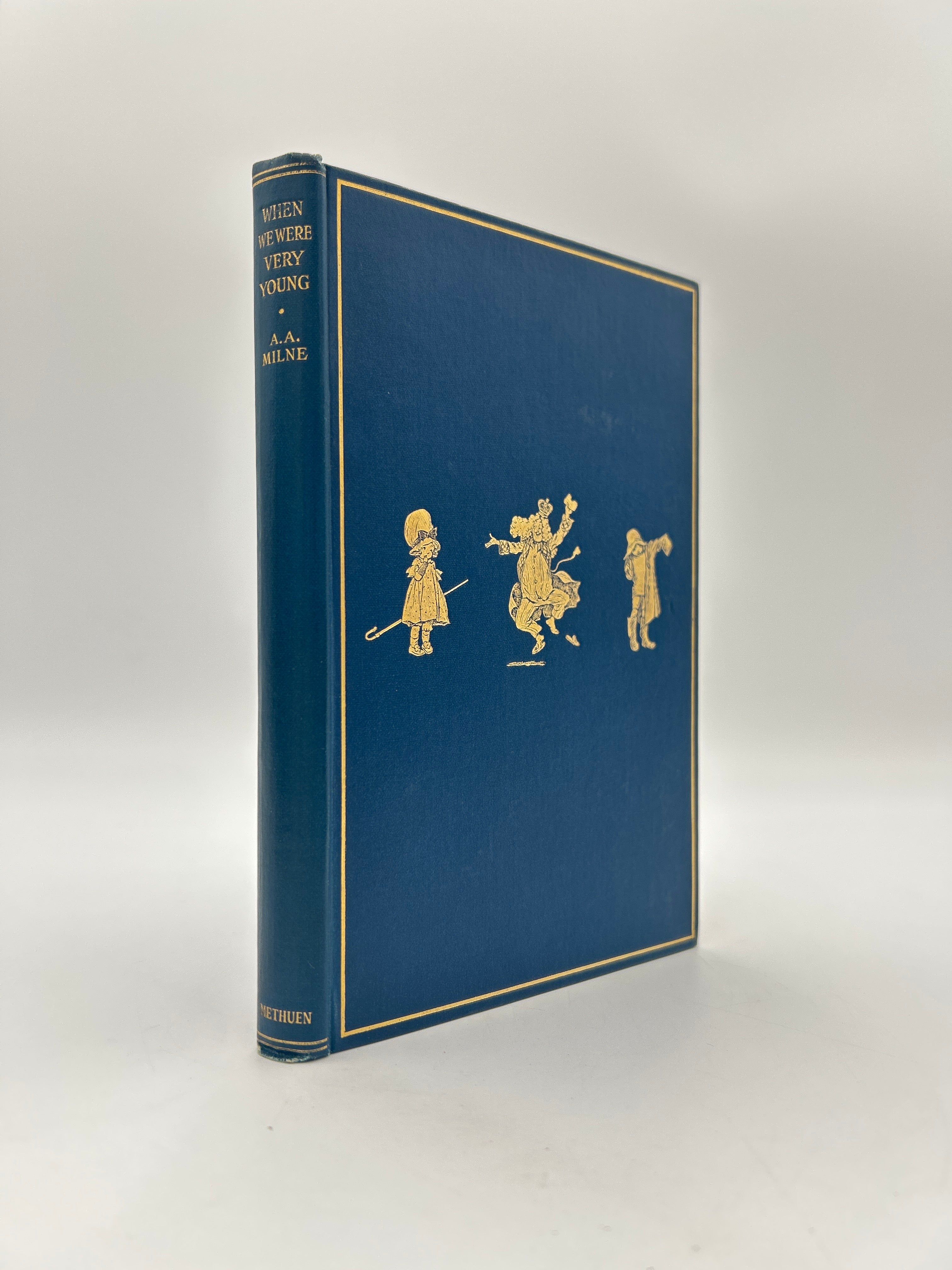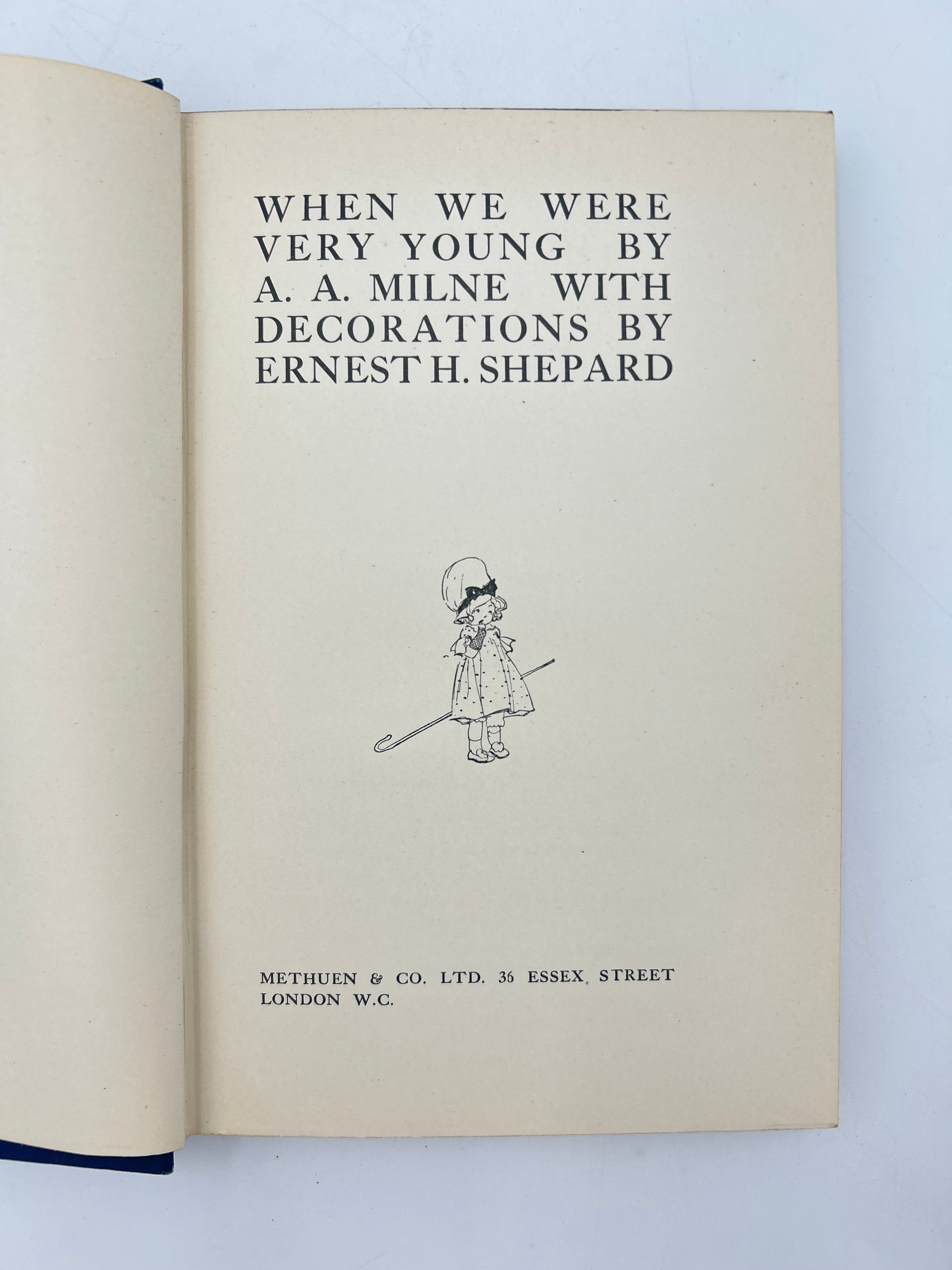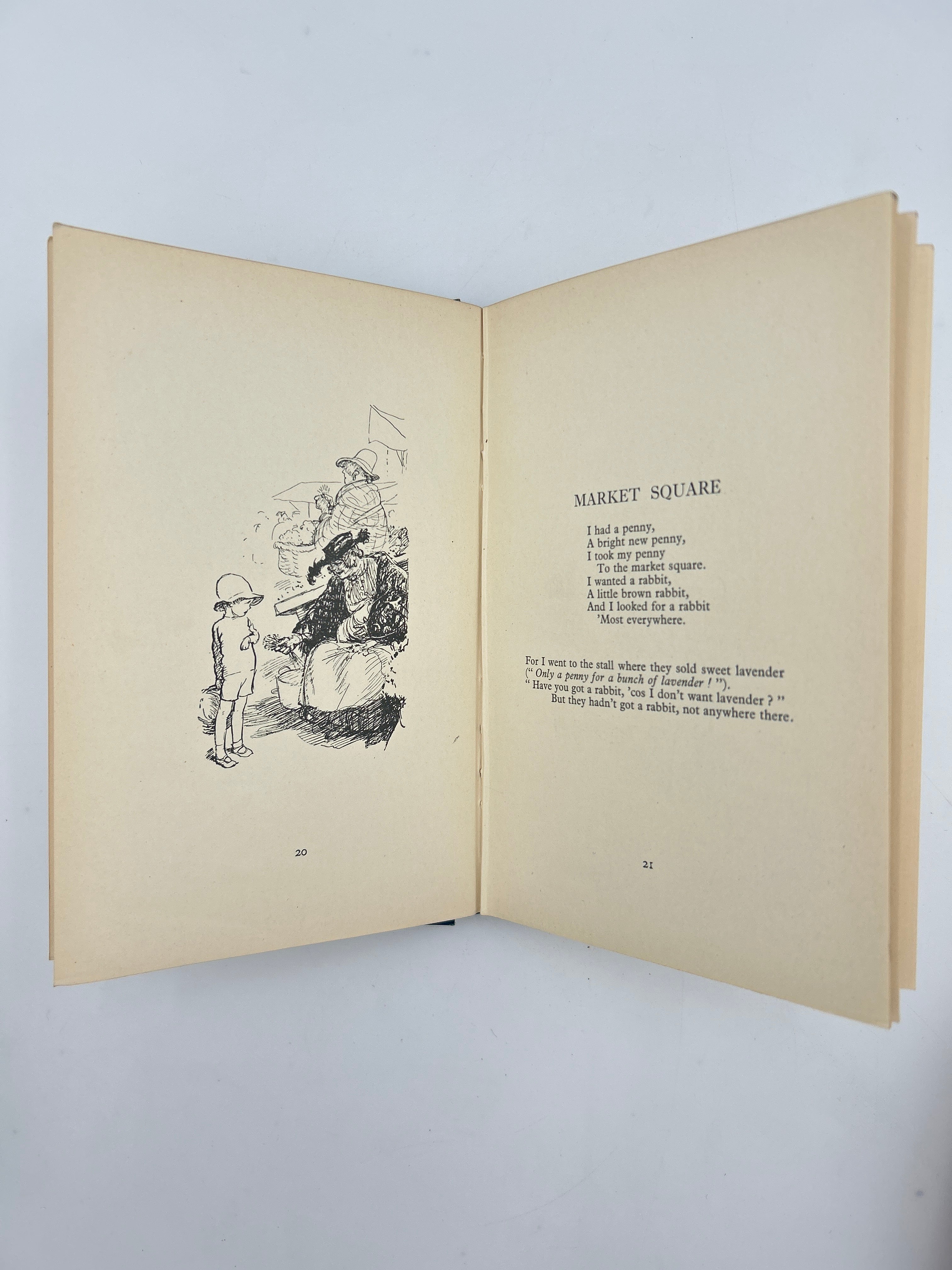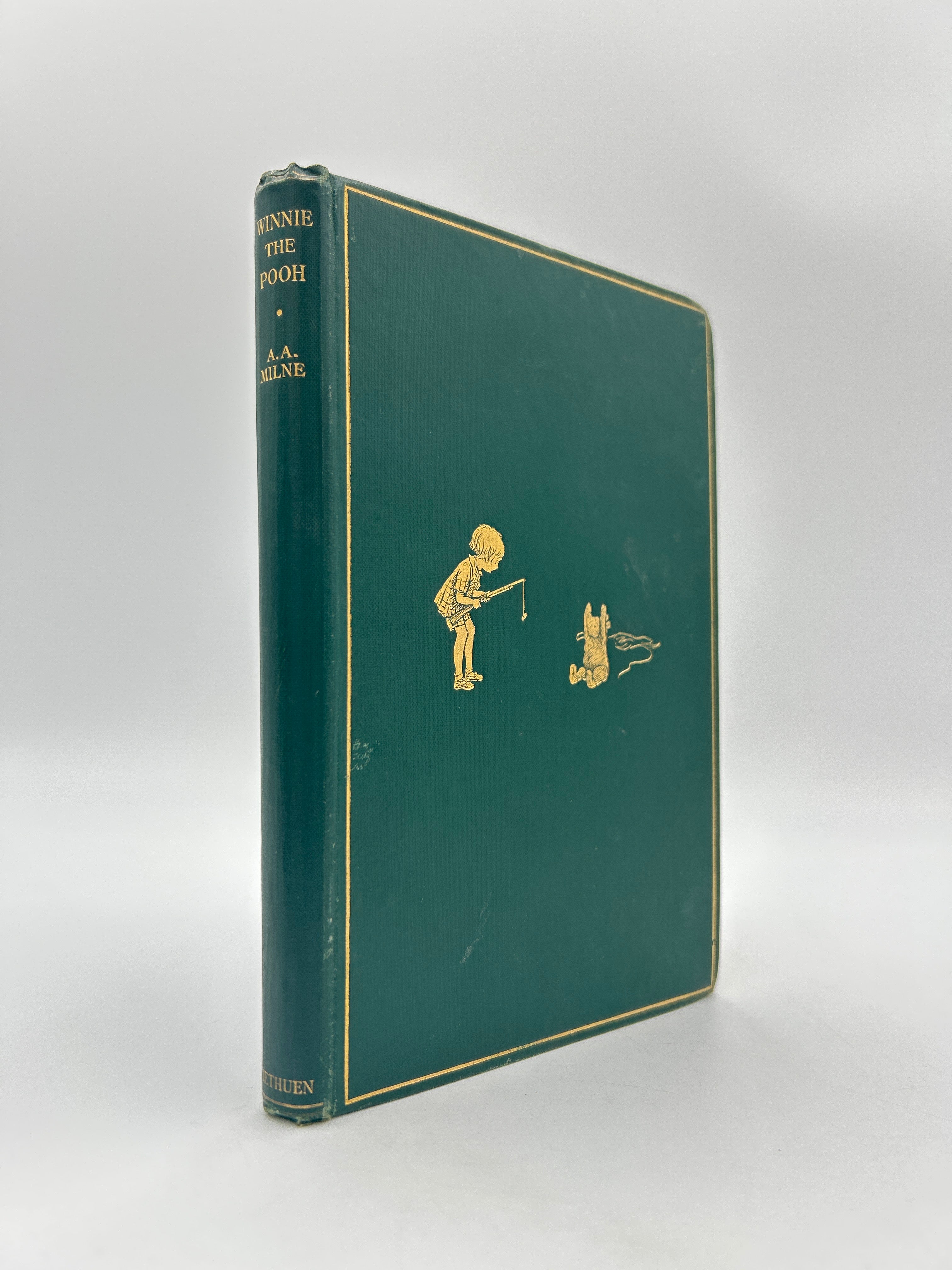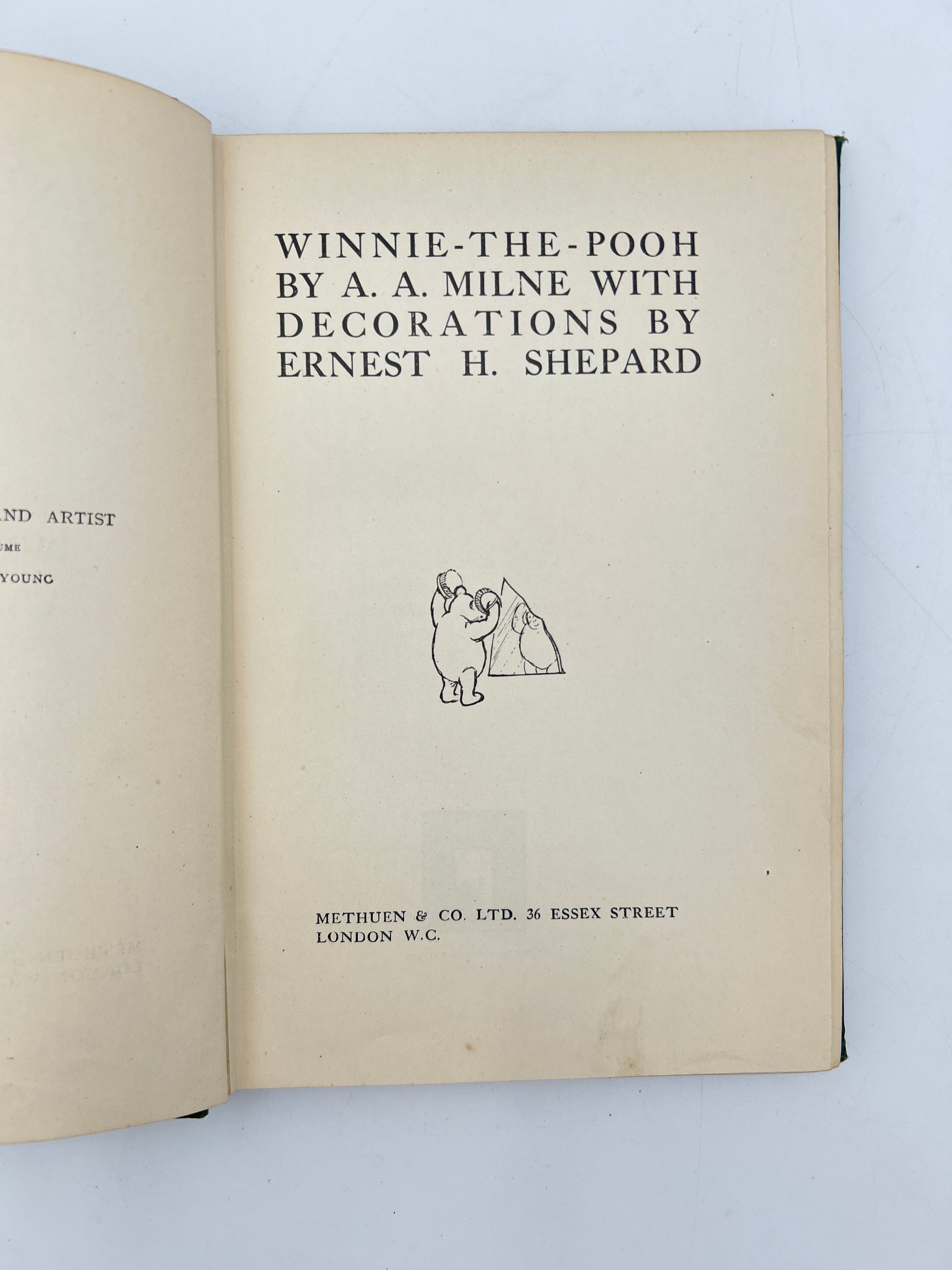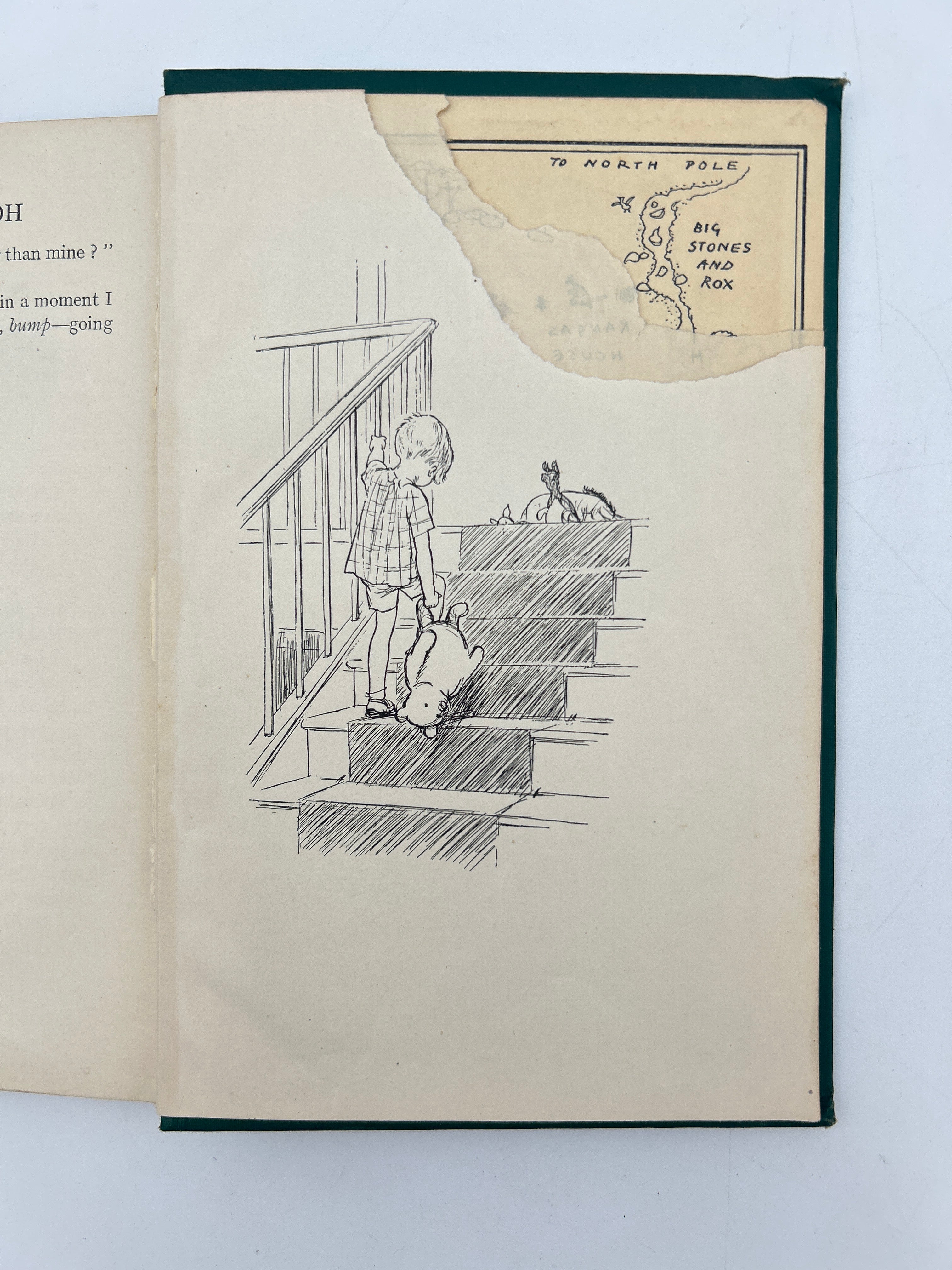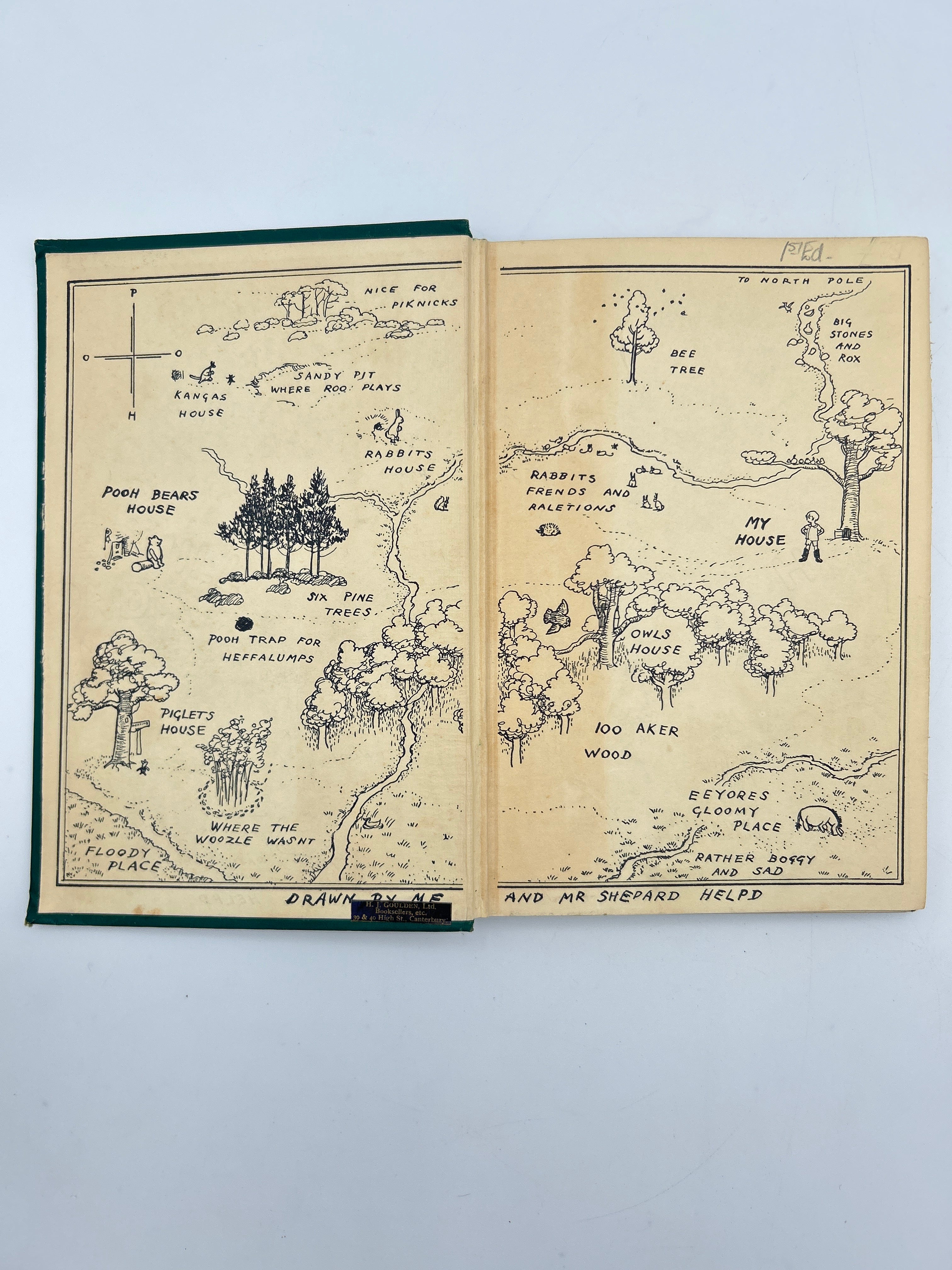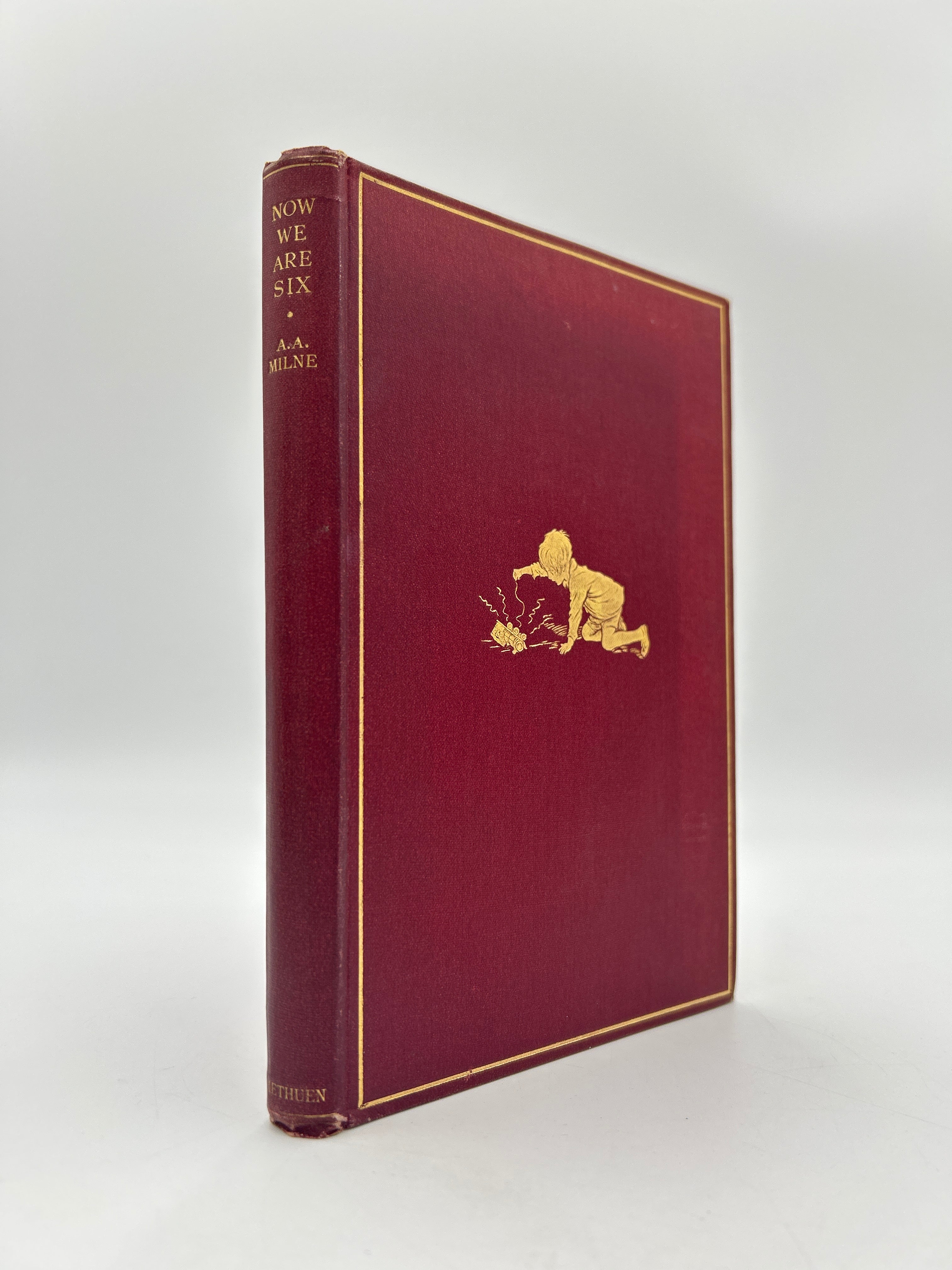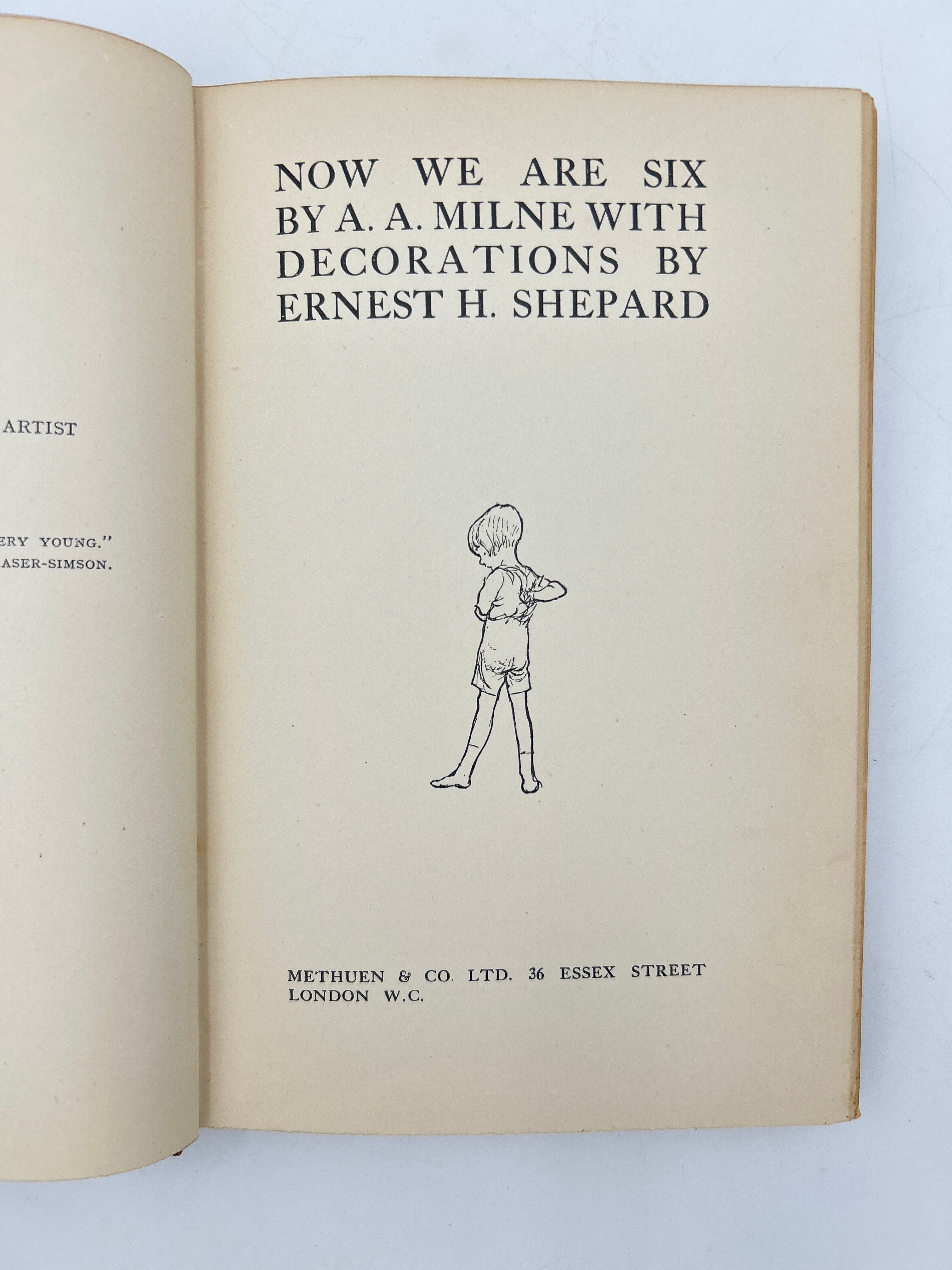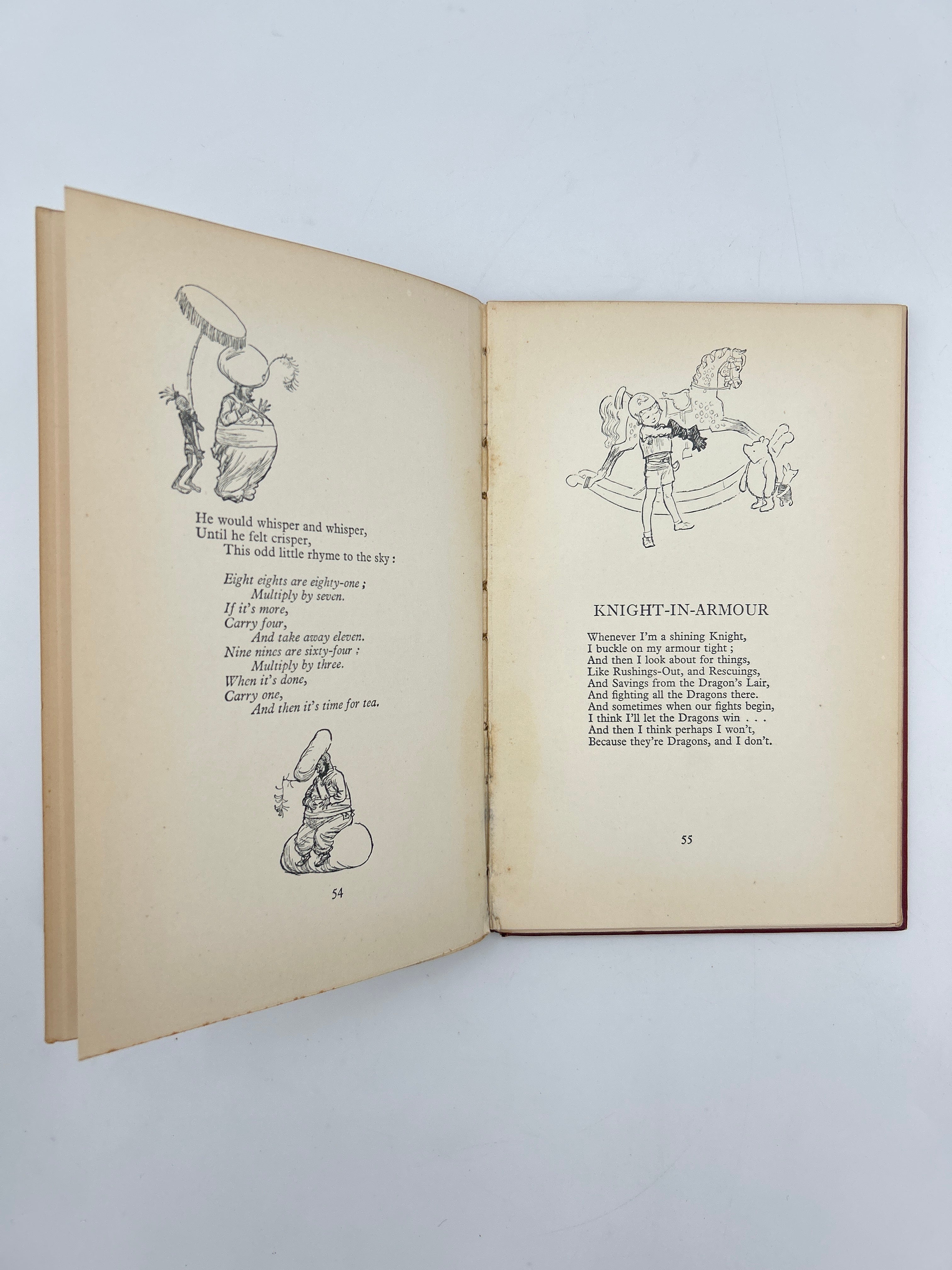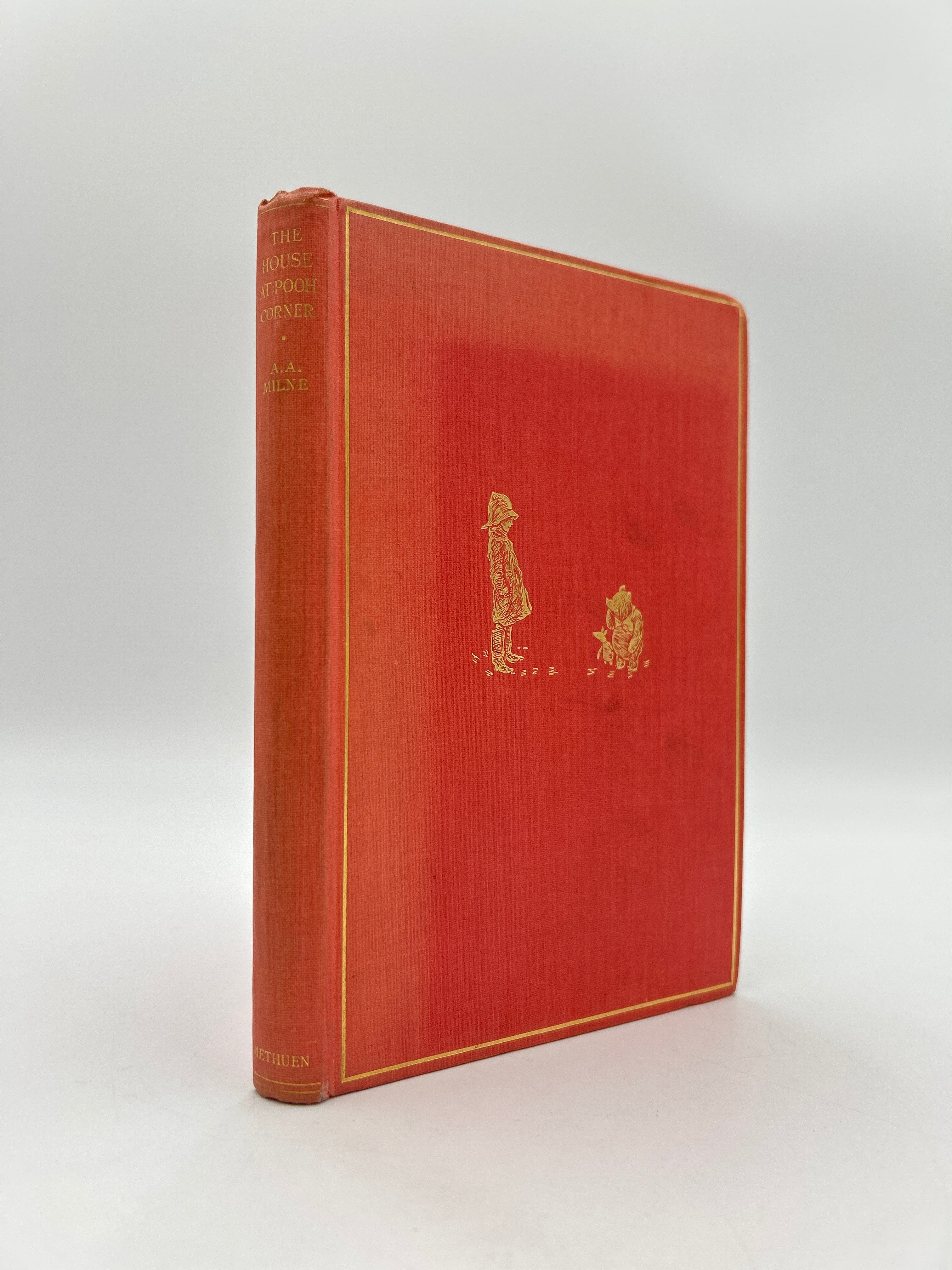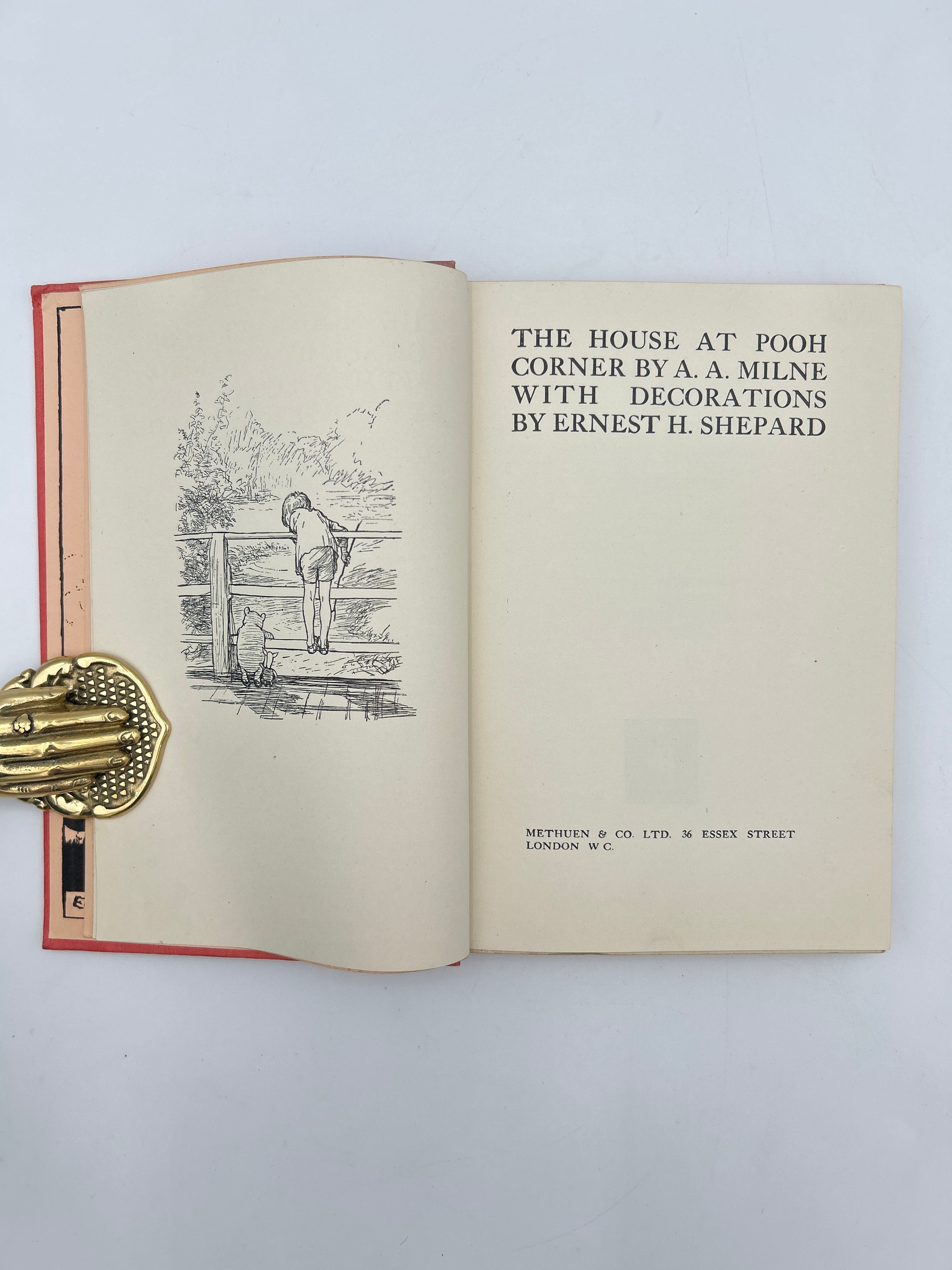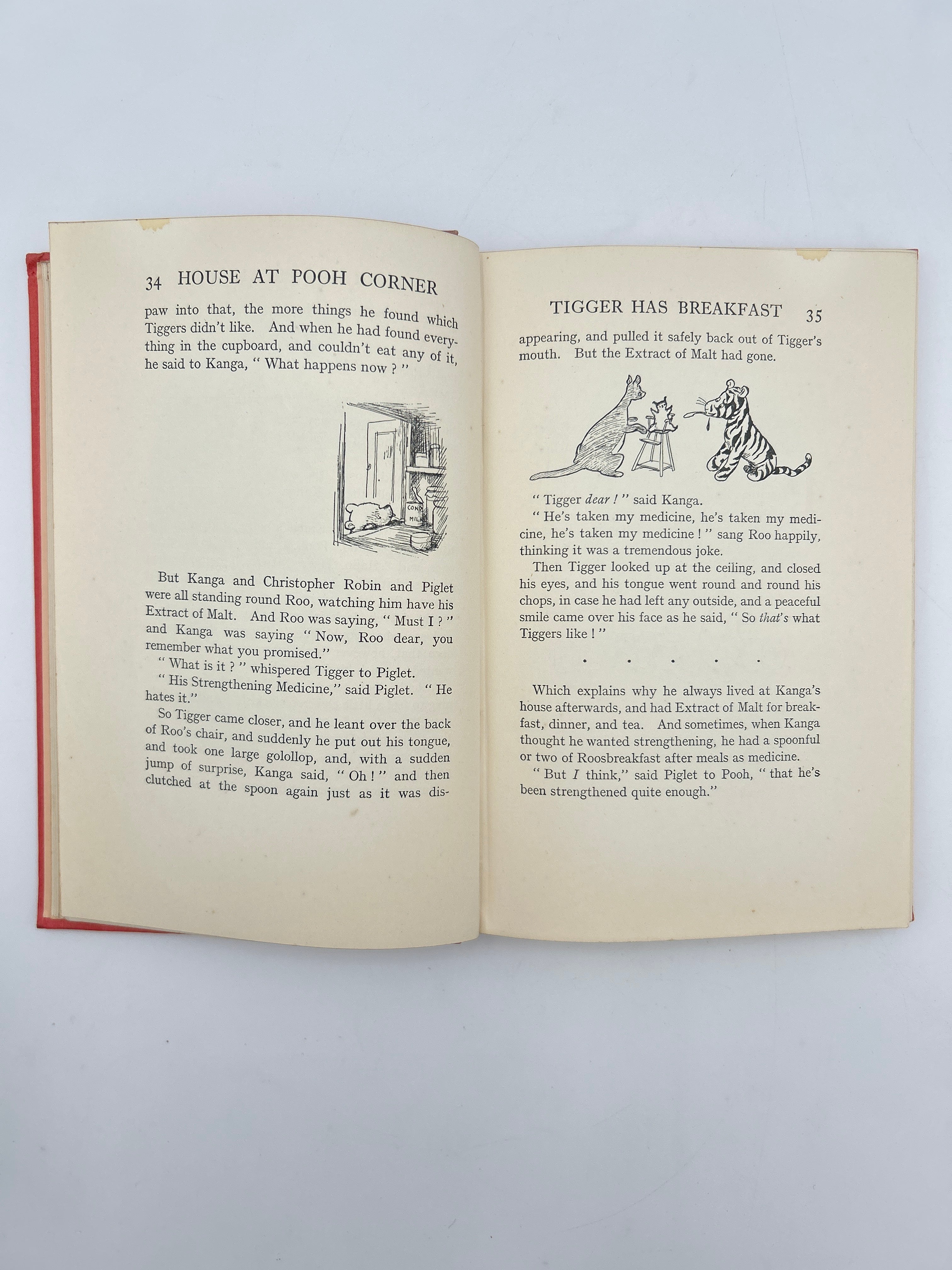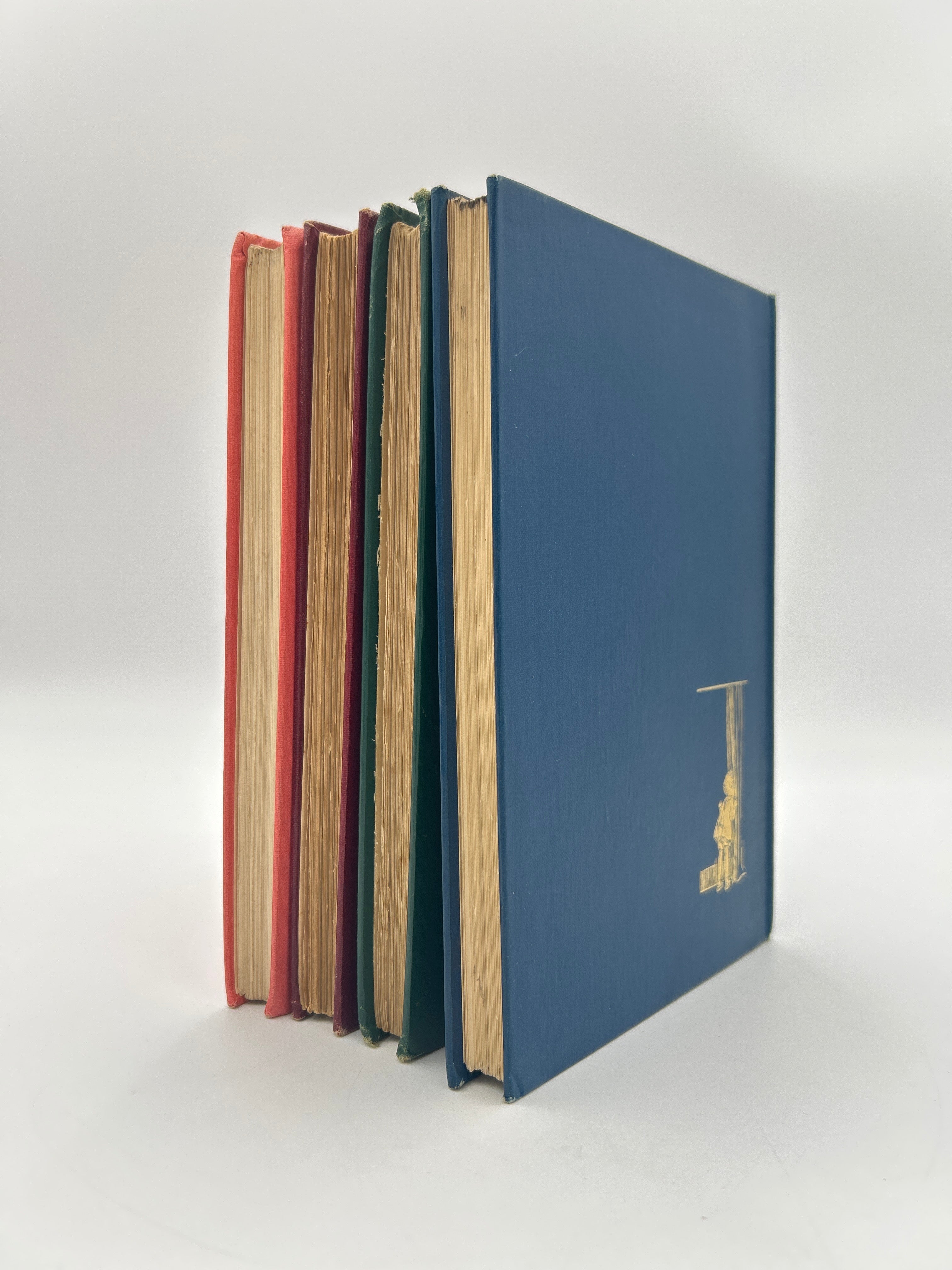Winnie the Pooh Complete First Edition Set
5C A. A. Milne. Decorations by E. H. Shepard. London, 1924, 1926, 1927, 1928. First Editions
Notes
A. A. Milne, originally a playwright and humorist, turned to writing for children after the birth of his son, Christopher Robin Milne, who inspired the beloved characters and settings of the Pooh stories. The real Christopher’s stuffed animals became the models for Pooh, Piglet, Eeyore, Tigger, and the rest. Milne’s words were brought vividly to life by illustrator E. H. Shepard, whose expressive pen-and-ink drawings helped define the gentle, English countryside tone of the books. First editions of the Pooh series, published by Methuen & Co. in the 1920s, are treasured for their original illustrations, high-quality bindings, and their role in shaping one of the most enduring legacies in children's literature. The Hundred Acre Wood itself was inspired by Ashdown Forest in East Sussex, a real place Milne and his son loved to explore.
When We Were Very Young (1924) was A. A. Milne’s first collection of children’s verse, introducing readers to a whimsical world of childhood imagination. Though Winnie-the-Pooh is only briefly hinted at in the poem Teddy Bear, the book set the tone for the gentle, lyrical style that would define the Pooh series. Its nostalgic charm, paired with E. H. Shepard’s delicate illustrations, immediately captured the hearts of readers young and old.
Winnie-the-Pooh (1926) formally introduced the world to Pooh Bear and his friends in the Hundred Acre Wood. Through a series of episodic adventures, Milne created a universe filled with gentle humor, quiet wisdom, and deeply human characters—despite their animal forms. The book’s warmth and simplicity helped establish it as a cornerstone of children’s literature.
Now We Are Six (1927) returned to poetry, blending whimsy with reflection as Milne explored the growing awareness and imagination of a child at the cusp of leaving early childhood behind. Several poems reference Christopher Robin and his companions, deepening the emotional texture of the Pooh world while remaining rooted in the rhythms of everyday play.
The House at Pooh Corner (1928) brought the narrative arc to a tender conclusion. Introducing new characters like Tigger and bidding farewell to the enchanted world of childhood, the book ends with an unforgettable scene between Christopher Robin and Pooh—a moment of parting that resonates with both joy and quiet sorrow. It marks a subtle transition from fantasy to memory.
Description
Each book in blue, green, red, and pink cloth binding with gilt illustration to upper and lower boards with gilt lettering to spines. Each book illustrated throughout. All first editions. Housed in custom slipcase with five raised bands and gilt lettering and decorations. Points bumped on each volume. Gilt top edges. Pictorial endpapers except for When We Were Very Young which also has bookplate to inner board of Frederick John Hancock Lloyd. Winnie the Pooh has upper right corner torn of final endpaper and last illustrated page without any damage to the image or text. Now We Are Six with browning to fore edge. The House at Pooh Corner has some sun fading to upper board. All fine condition.
